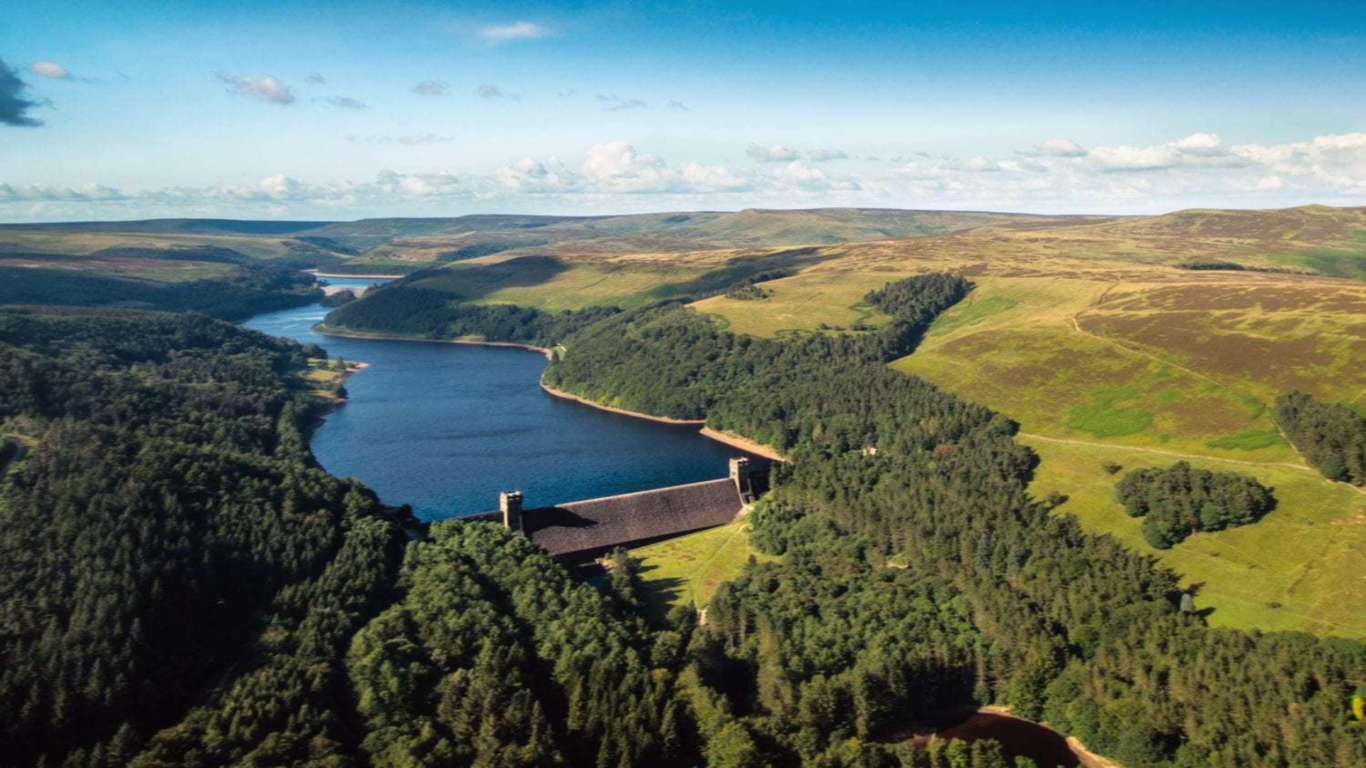Derwent Dams & Ladybower
WALKS, CYCLING TRAILS & HISTORY
The upper valley of the Derwent is a deep valley surrounded by gritstone edges and dominated by three great reservoirs. Constructed by the Derwent Valley Water Board primarily to provide water for Sheffield, Derby, Nottingham and Leicester. The upper two dams, Howden and Derwent, were constructed between 1901 and 1916 and they were such a large undertaking that a village called Birchinlee was built to house the workers, along with a narrow-gauge railway between Howden Dam and nearby Bamford. Traces of both these may still be seen. The dams were opened in 1916.
During the Second World War, Derwent was used by 617 ‘Dambusters’ Squadron for practicing their low level flying, prior to heading over to Germany to attack their targets in the Ruhr Valley.
Next to Derwent, lies Ladybower Reservoir. Up until the 1940s, the villages of Ashopton and Ladybower stood in what was a valley. Both were demolished in order to construct the reservoir and slowly they completely submerged over time. During dry spells, their remains can occasionally be viewed when the water level drops.
The whole area is a haven for walkers, hikers, runners and cyclists. Refreshments, parking, cycle hire is available from Fairholmes, a 15 minute drive from The Millstone









